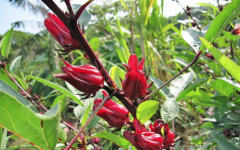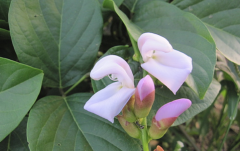Introduction to the growth environment and cultivation techniques of lemon wasp grass, what are the functions of lemon wasp grass
Lemon vanilla (Lemon balm), also known as vanilla, honeybee flower, lemon balsam, lemon mint, is a very ancient series of lemon vanilla plants. Potted lemon wasp grass is a good way to really understand lemon wasp grass, you must start from Ephesus at the mouth of the Aegean Sea in ancient Greece, and it is also the place where the Virgin Mary will live forever! But first, let's have a basic understanding of this lemon-scented vanilla!
Lemon wasp grass has a wide range of uses, and because of its excellent effects of relieving stress, helping sleep and digestion, related products such as lemon vanilla pure dew, lemon essential oil, lemon humminggrass tea, etc., are very popular with certain people.
Lemon scented bee grass
Morphological characteristics
Scientific name: Melissa officinalis English name: Lemon Balm family genus: Labiatae
perennial herb, 30-60 cm tall
is highly branched and easy to form clumps.
ovate-serrated, opposite, tomentose, leathery
Lemon scented bee grass
Growth environment and cultivation techniques
likes to grow in a warm, dry, well-drained and well-lit environment; it can also grow in semi-shaded places.
is resistant to drought, but the environment with high temperature and humidity grows poorly.
Sandy land with good hydrophobicity of
is sunny, ventilated and dry.
often prunes too many or aging branches and leaves
Reproduction
Lemon scented bee grass
seeds, cuttings or ramets can be propagated, and most of them remain seeds by cuttings.
winter and spring indoor or shaded greenhouse cuttings
takes 8-15 cm long branches in the middle and upper part, inserts them into sandy soil and keeps them moist in a hidden place for 15-25 days to take root and form seedlings.
Lemon scented bee grass
Use
harvests tender shoots and leaves, or 3-5 nodes above the base
can be used freshly or after drying in a cool, ventilated place.
can be used in cosmetology, medicine, essential oils, ingredients, etc.
generally makes tea mainly, can also cook with meat, or make cookies, ice cream, sauces and so on.

- Prev

Can Luoshenhua be planted in the north? Introduction to the planting method, time and nutritional value of Luoshenhua
Do you know how to grow Luoshen flowers? Do you want to know about it? Let's have a look! In the process of planting, we should pay more attention to the common diseases and maintenance of Luoshenhua! In the north, the planting time of Luoshenhua is about March to April, and the all-day sunshine is the best.
- Next

Introduction of planting techniques and propagation methods of knife bean, what are the differences between vine and dwarf varieties of knife bean?
Do you know red chicken beans? This kind of plant is also called knife bean, so what is the planting time and method of knife bean? Let's have a look! Knife beans, flowering from June to July, fruit from August to October. Those who are commonly known as "knife beans" in plants have vines.
Related
- The first cup of black tea in spring, the flavor and history of tea gardens in Kenya, Africa
- The computer can not only choose potatoes, but also grow tea rice. AI will grow winter oolong tea champion.
- It is not only the inflated tea bitten by insects, but also engraved with the four seasons tea in Beipu.
- The Oriental Beauty Tea Festival in Zhuxian County takes the stage at the weekend to experience the plus-size feast of oil tea.
- & quot; Oriental Beauty Tea & Exploration of Emei in Hsinchu, the hometown of quot;
- The new variety of strawberry "Tainong 1" dessert is the first choice with mellow aroma. Crimson gorgeous
- History of Tea in Taiwan: from Wild Inner Mountain to Export Tea Garden
- Two types of Taiwan Oriental Beauty Black Tea won the British three-Star Award for Childhood Tea Xiang Zhang Jiaqi changed from pilot to champion tea maker.
- Banana species and varieties: the planting history of Taiwan Xianren banana and dwarf banana is long, is banana disease resistant?
- Coffee planting Technology: Qianjie Coffee from Seedling to harvesting

